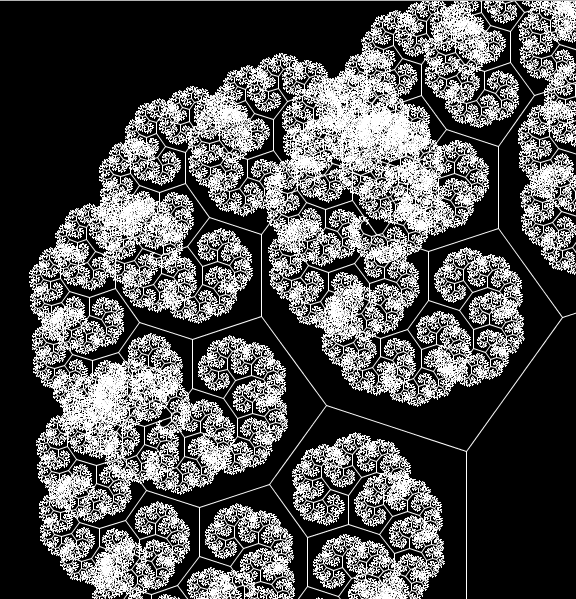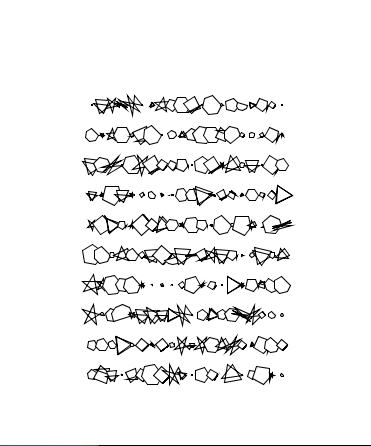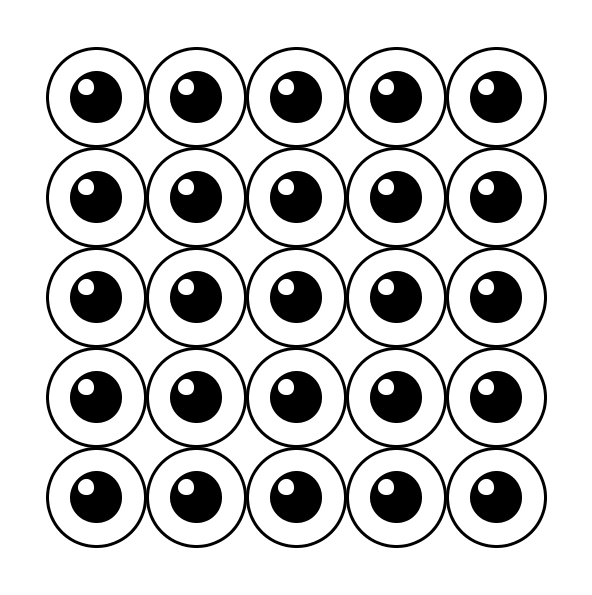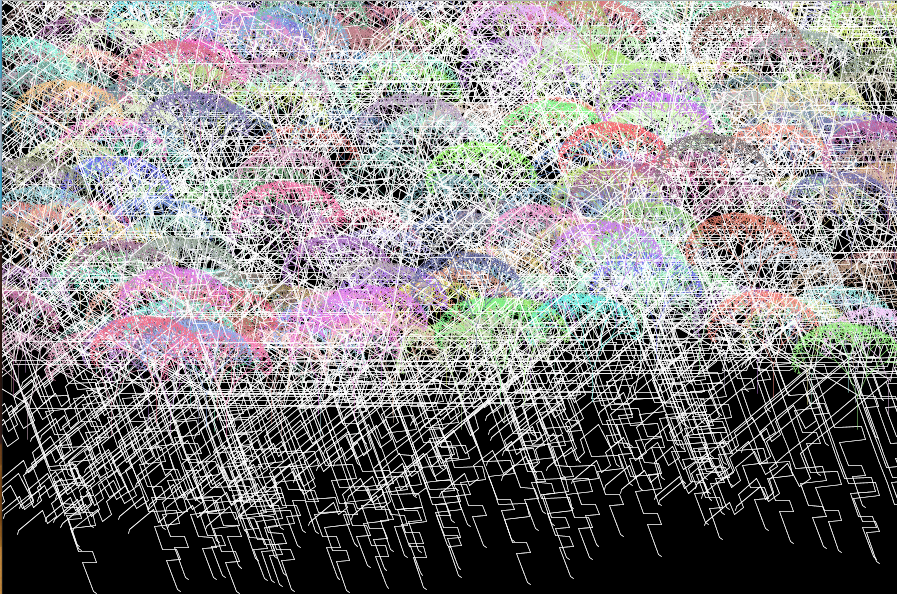
This studio exercise was an instance where the revision process helped me understand the concept much more deeply.
Initially, I built upon check_in 12, where I used curved fractal shapes to randomly place onto the canvas, in order to create a messy sweeping effect.

However, I wasn’t particularly satisfied with my first attempt (image above), so I went and consulted Yahan, who seemed to have a good grasp of combining patterns into a working system. From my observation, her work displayed a perfect balance between stability and randomness.
One of the most helpful remarks she made was that – ‘the relationship between different patterns does not need to strictly happen in the code, they can embed into the visual effect as well.’ I found that liberating. Under Angela’s guidance, I attempted to write down three relationships between the sub-parts / basic-patterns. I had a hard time because I kept staring at my codes. Yahan’s insight made me realize that perhaps I can perceive these ‘relationships’ in a different light. To paraphrase the cliche, “Think outside of the code”.
Yahan also recommended me to re-read George Brecht‘s article ‘Chance Imagery’, which turned out to be fruitful.
After some contemplation, I had a spark. Another pattern Angela demonstrated in class, which I was quite fond of, was the snowFlake. The rigidity of this genre of patterns was in stark contrast with my softer recursive pattern. I thought: what would happen when I merge softness with hardness? when curviness meet linearity? I wanted to find out.
To achieve the exact overlapping effect I envisioned, I fine-tuned the vertexes’ values into this cricked stick shape. Then I put it into a double loop of random positioning, and let them ‘dance’.

My experiments were successful. This may just be the ‘underlying chance mechanism’ that Brecht pointed out. We can’t pinpoint what exactly the cause of the visual effect is, yet it just happens, in a sense ‘unconsciously’ (to quote Brecht). The relationship between the two drastically contrasting patterns is obvious, at the same time subtle.
One place that made me understand the interplay between randomness and stability better was when I experimented with the effect of angular randomness.
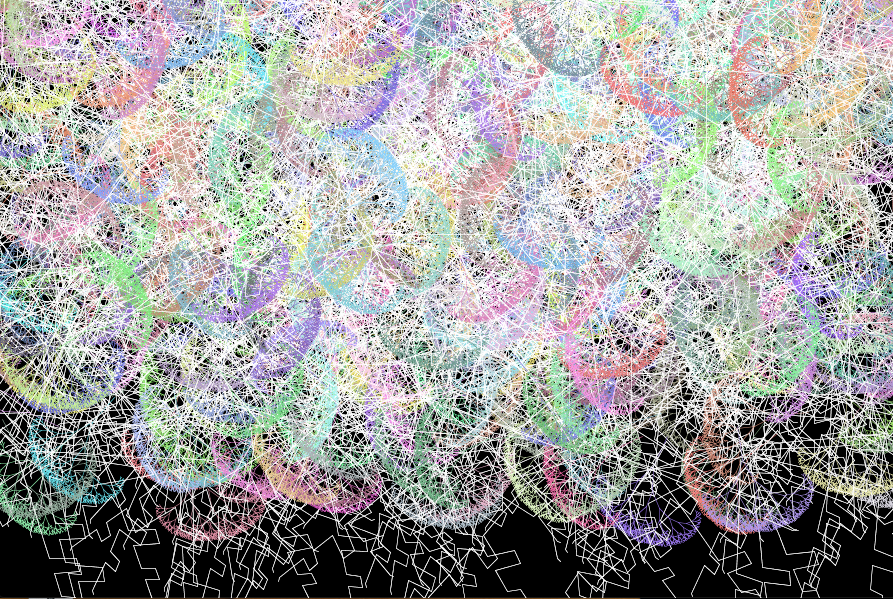
rotate(-PI/(random(-2, 2))); (above with, below without)

This one single short line of code was able to alter the whole outlook of this sketch. Even though this sort of drastic shift has happened in numerous occasions throughout this semester (the school year actually haha) , the moment when it happened, still stunned me.
Computer art never fails to catch me off guard.
